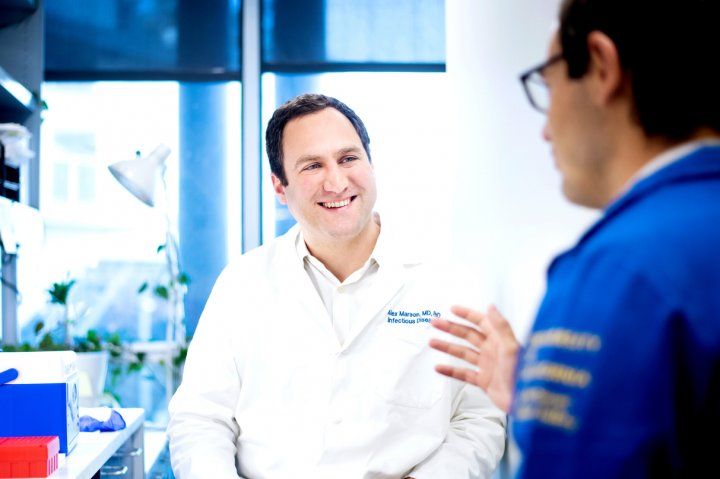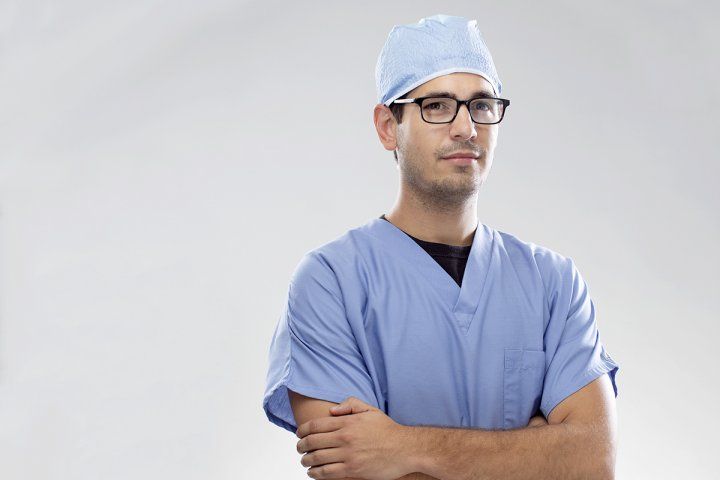CRISPR-Based ‘Discovery Engine’ for New Cell Therapies to Advance Cancer Treatments
Despite centuries-long efforts to develop cures for cancer, various forms of the disease will kill about 630,000 people in the U.S. in 2020. But hopes are rising for cell therapies – sometimes called “living medicines” – that can boost and adapt the natural cancer-fighting potential of the immune system in ways that conventional cancer treatments cannot match.
UC San Francisco researchers now have reported a new method to design and test cell therapies, one they expect will speed the development of new life-saving treatments not only for cancer, but for other diseases, too.

Alex Marson, MD, PhD
Cell therapy for cancer is a type of immunotherapy. Immune-system cells known as T cells are isolated from a patient’s blood and genetically modified in the lab, inserting or removing genes so the cells will better recognize and destroy tumors. These modified T-cells are grown in culture until they number in the hundreds of millions, and are then infused back into the patient through an IV drip.
One form of cell therapy, known as CAR-T-cell therapy, is already approved for certain blood cancers, but so far cell therapies have not been effective against the “solid tumors” that affect the breast, colon, brain, lung, and other tissues.
In 2018, a UCSF team led by immunologist Alex Marson, MD, PhD, along with Theo Roth, an MD/PhD student in the UCSF Medical Scientist Training Program, developed a breakthrough technique in which they used pulses of electricity (a method called electroporation) to enable CRISPR gene-targeting technology to quickly and efficiently reprogram T-cells with new functions.
Now, in a study published April 16, 2020, in Cell, the team has advanced this technique to power a high-throughput platform to evaluate the specificity and potency of many different potential cell therapies simultaneously – comparable to the approach already widely used in industry to quickly screen large batches of small molecules to assess whether they would make effective drugs.
The UCSF researchers evaluated a “library” of 36 different DNA sequences, a selection based on educated guesses about which bits of genetic material, when spliced into T cells, might alter cell function to better fight cancer. They inserted the different sequences into different T cells to compare their best guesses head to head in the lab.
“Rather than pursuing one educated guess at a time, we wanted a systematic way to compare different potential therapeutic edits head to head,” said Marson, who serves as scientific director of biomedicine at the UCSF-UC Berkeley Innovative Genomics Institute (IGI) and is a Chan Zuckerberg Biohub Investigator. “The ability to iterate fast and test different candidates against each other is what the field needs to move forward and have a discovery engine for next-generation cell therapies.”

Theo Roth, graduate student
Many solid tumors express proteins that shield them from T cell attacks, so the researchers evaluated not only the modified cells’ ability to find cancer cells, but also their ability to accumulate robustly within tumors. Using a distinctive DNA “barcode” to track the modified T cells, the researchers “raced” them against one another in lab dishes and in vivo cancer models. This allowed them to identify specific gene modifications that give T cells the best ability to kill off solid-tumor cells in a lab dish and also more effectively fight a type of human skin cancer grown in mice.
Their new methods also enable researchers to measure specific patterns of gene activation within individual T cells to gain insight into how cellular functions have changed in the modified cells that fare best against tumors.
“We now are working to further scale up and optimize this screening platform,” said Roth, who with Marson is a co-founder of Arsenal Biosciences, a company funded in part by the Parker Institute for Cancer Immunotherapy that is focused on producing and testing new cell therapies. “We believe this cell therapy development platform will make it possible for academics and industry to begin generating all sorts of genetically programmed T cells targeted to specific cancers as well as other medical applications.”
